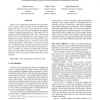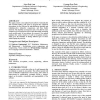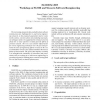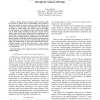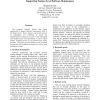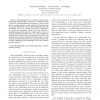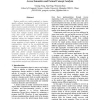CSMR
2008
IEEE
14 years 6 months ago
2008
IEEE
Many reverse engineering approaches have been developed to analyze software systems written in different languages like C/C++ or Java. These approaches typically rely on a meta-mo...
CIKM
2009
Springer
14 years 6 months ago
2009
Springer
This paper presents a tree-pattern-based method of automatically and accurately finding code clones in program files. Duplicate tree-patterns are first collected by anti-unificati...
WCRE
2009
IEEE
14 years 6 months ago
2009
IEEE
The increasing amount of data available about software systems poses new challenges for re- and reverse engineering research, as the proposed approaches need to scale. In this con...
WCRE
2009
IEEE
14 years 6 months ago
2009
IEEE
—Object-oriented software quality models usually use metrics of classes and of relationships among classes to assess the quality of systems. However, software quality does not de...
WCRE
2009
IEEE
14 years 6 months ago
2009
IEEE
Abstract—Enterprise Applications are complex software systems that manipulate much persistent data and interact with the user through a vast and complex user interface. In partic...
WCRE
2009
IEEE
14 years 6 months ago
2009
IEEE
The proposed research defines data fusion approaches to support software maintenance tasks at the feature level. Static, dynamic, and textual sources of information are combined t...
WCRE
2009
IEEE
14 years 6 months ago
2009
IEEE
—Static disassembly is a crucial first step in reverse engineering executable files, and there is a considerable body of work in reverse-engineering of binaries, as well as are...
WCRE
2009
IEEE
14 years 6 months ago
2009
IEEE
—Navigating large software systems is difficult as the various artifacts are distributed in a huge space, while the relationships between different artifacts often remain hidden...
WCRE
2009
IEEE
14 years 6 months ago
2009
IEEE
Feature models are widely employed in domainspecific software development to specify the domain requirements with commonality and variability. A feature model is usually construct...
WCRE
2009
IEEE
14 years 6 months ago
2009
IEEE
—During the evolution of a software system, a large amount of information, which is not always directly related to the source code, is produced. Several researchers have provided...
